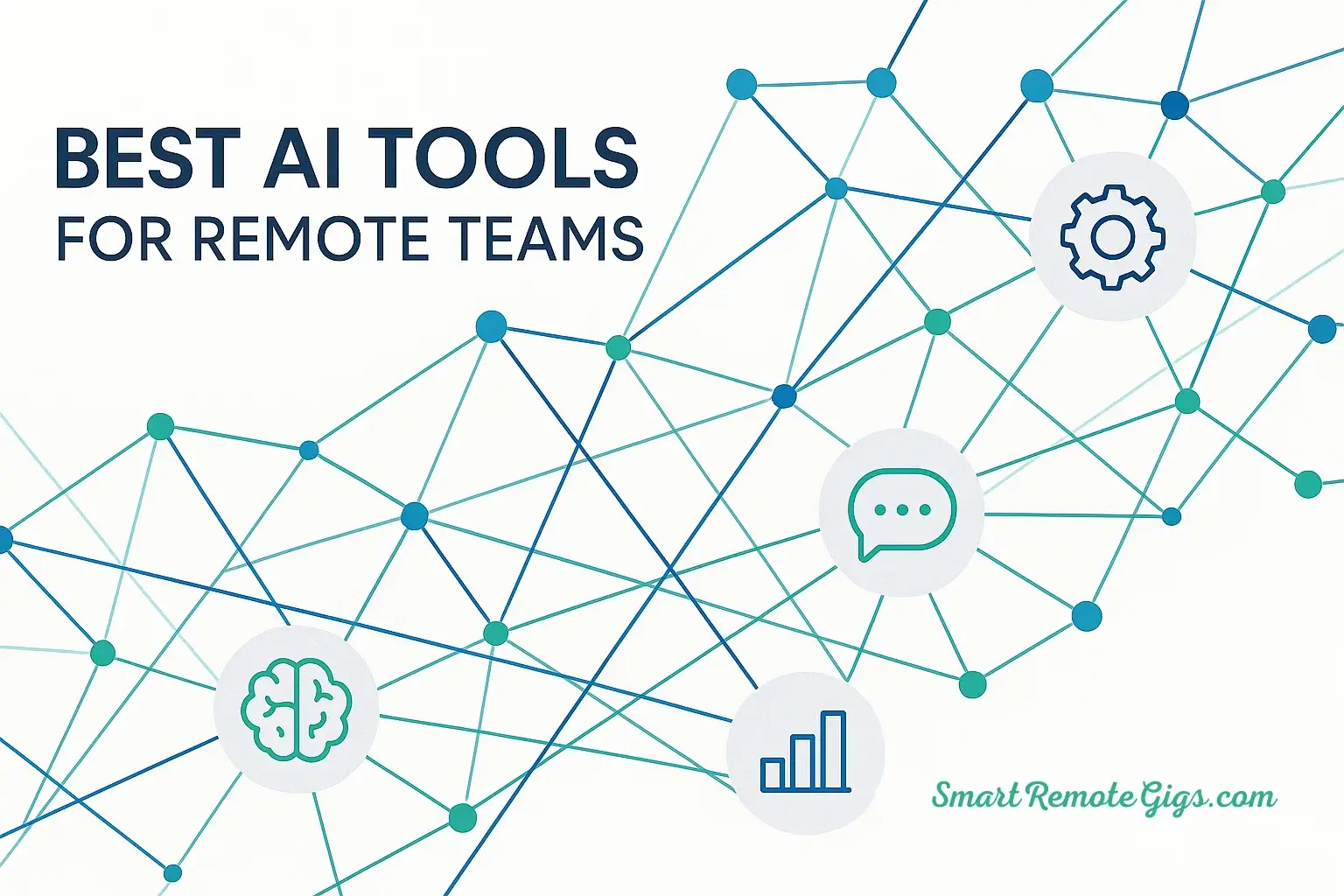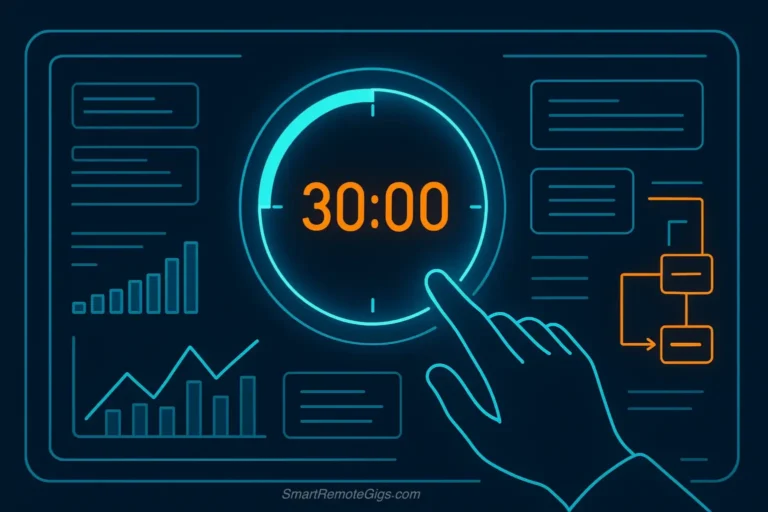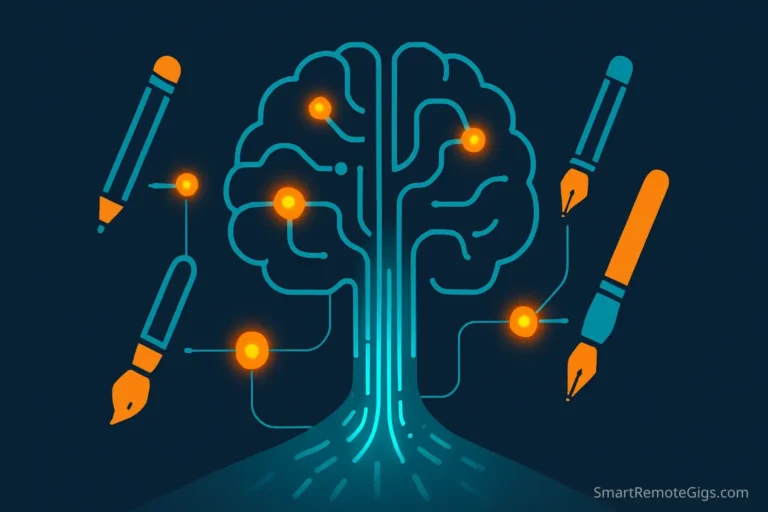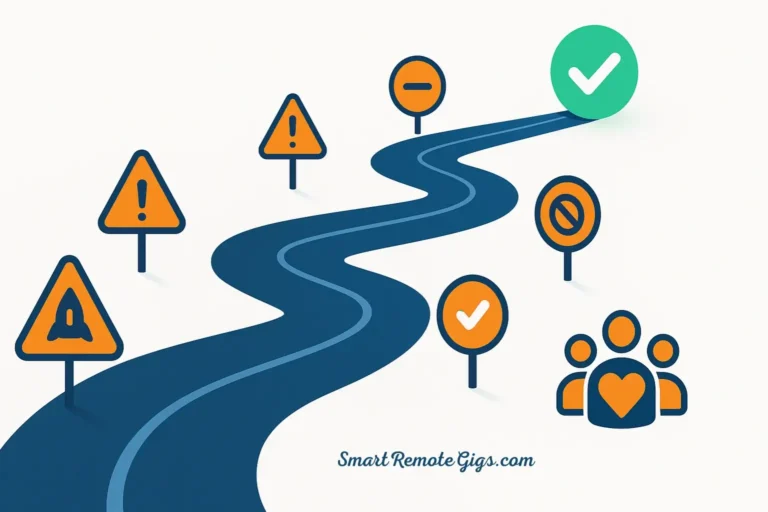Remote work has fundamentally transformed from an emergency pandemic response to the new standard of modern business operations. Yet, this shift hasn’t been without its challenges. Teams across the globe are grappling with unprecedented levels of disconnection, information overload, and the dreaded “Zoom fatigue” that has become synonymous with distributed work environments.
The solution isn’t to retreat back to traditional office models, but rather to embrace the technologies that make remote collaboration not just possible, but superior to in-person work. AI tools for remote teams are no longer a luxury reserved for tech-forward startups—they’ve become the essential connective tissue that transforms scattered individuals into high-performing, cohesive units.
This comprehensive guide provides more than just another list of tools. Instead, you’ll discover a strategic framework to identify your team’s biggest pain points and match them with the precise category of AI solution that will drive measurable improvements in productivity, communication, and overall team satisfaction.
Quick Overview: The Best AI Productivity Tools
| Tool | Best For | Key Feature | Rating | Link |
|---|---|---|---|---|
| Fireflies.ai | Automating meeting notes | AI Transcription & Summaries | 4.8 / 5 | Visit |
| Krisp.ai | Crystal-clear virtual calls | Noise & Echo Cancellation | 4.7 / 5 | Visit |
| Slack AI | Instant team alignment | In-App Channel Recaps | 4.9 / 5 | Visit |
| Motion | Automating daily schedules | AI-Powered Calendar | 4.6 / 5 | Visit |
| Asana Intelligence | Managing complex projects | Project Risk Prediction | 4.7 / 5 | Visit |
| Jasper.ai | Brand-consistent content | Brand Voice Matching | 4.8 / 5 | Visit |
| ChatGPT | Versatile team assistance | All-in-One Conversational AI | 4.9 / 5 | Visit |
| Claude | Complex reasoning tasks | Advanced Problem-Solving | 4.8 / 5 | Visit |
Our Top Picks: The Best of the Best
While all the tools on this list are excellent, two stand out for their profound impact on daily productivity and team alignment. After extensive testing, we’ve selected these as our top recommendations.
Best Overall: Fireflies.ai
For any team that spends significant time in meetings, Fireflies.ai is a game-changer. It solves one of the biggest productivity drains: manual note-taking and the fear of missing key details. By automating transcription and creating searchable, summarized archives of every conversation, it frees up your team to focus on collaboration instead of administration. It’s a specific, powerful solution to a universal problem.
Best for Team Communication: Slack AI
Most remote teams already live in Slack. Slack AI enhances this core communication hub, turning chaotic channel conversations into clear, actionable insights. The ability to get instant summaries of long threads or entire channels without reading everything is invaluable. It keeps everyone in the loop, reduces noise, and makes asynchronous work seamless. It’s the ultimate upgrade for your team’s central nervous system.
The 3-Step Framework: How to Choose the Right AI Tools
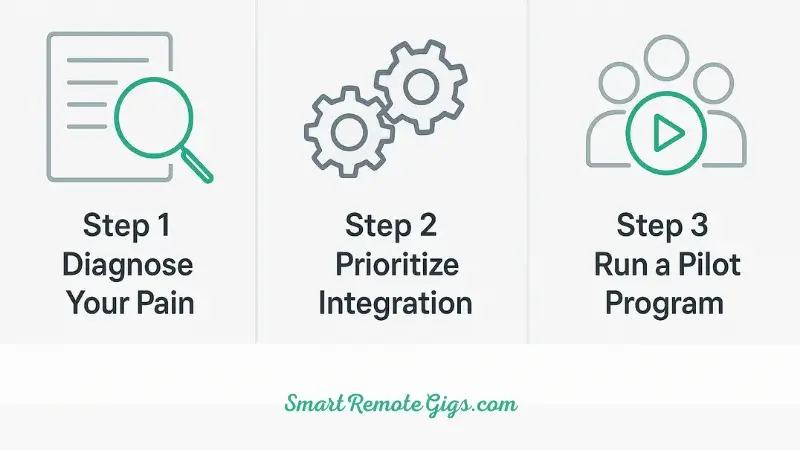
Before diving into specific AI collaboration tools, it’s crucial to approach tool selection strategically. The most successful remote teams don’t simply adopt every new AI productivity tool that hits the market. Instead, they follow a systematic approach that ensures each tool serves a specific purpose and integrates seamlessly into their existing workflow.
Step 1: Diagnose Your Pain – What Problem Are You Solving?
The first step is conducting an honest assessment of your team’s current challenges. Common pain points that AI for remote workers can address include:
- Inefficient meetings: Poor follow-up and unclear action items.
- Messy project tracking: Tasks falling through the cracks and unclear priorities.
- Slow content creation: Bottlenecks in producing marketing materials or documentation.
- Communication silos: Information trapped in individual inboxes or private conversations.
- Context switching fatigue: Team members juggling multiple tools and platforms.
Take time to survey your team and identify which of these challenges resonate most strongly.
Step 2: Prioritize Integration Over “Best-in-Breed”
A tool might be technically superior, but if it doesn’t integrate well with your existing collaboration stack (Slack, Google Workspace, Asana, etc.), it can decrease overall productivity. Your evaluation process should heavily weight how well potential tools fit into your core platforms. The most successful remote work tools become invisible parts of your existing workflow.
Step 3: Run a Pilot Program with a Small Team
Before rolling out any new AI tool across your entire organization, identify a small group of “champions” to test the solution. This pilot approach offers several advantages:
- Risk mitigation: Identify potential issues before they impact the whole team.
- Champion development: Early adopters become internal experts who can train others.
- Data-driven decisions: Measure actual productivity improvements before making significant financial commitments.
The ideal pilot program runs for 30-60 days and includes a diverse group of team members to test the tool across various scenarios.
The Best AI Tools for Meetings & Asynchronous Communication
This category transforms meetings from time-consuming obligations into strategic assets. These tools address meeting fatigue by automating administrative tasks, improving quality, and creating searchable archives that support asynchronous work.
Fireflies.ai
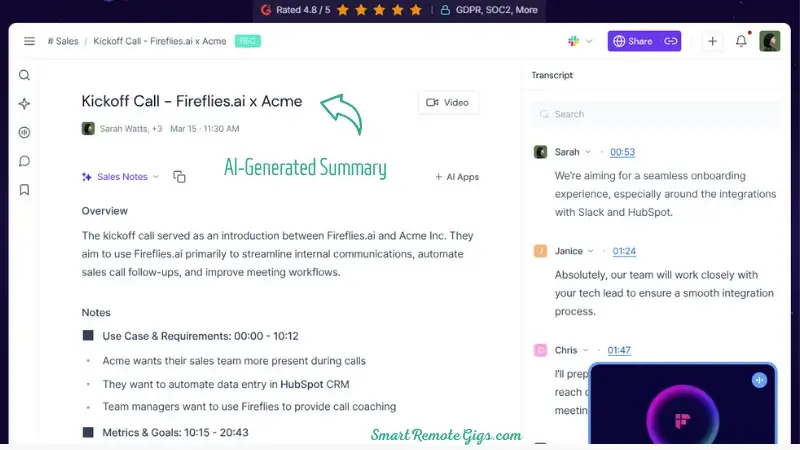
- What it is: Fireflies.ai serves as Your team’s AI meeting assistant, automatically joining video calls to record, transcribe, and analyze conversations across Zoom, Google Meet, and Microsoft Teams.
- Best for: Teams that struggle with note-taking, action item tracking, or making meeting content accessible to absent team members.
- Key AI Features: AI-generated smart summaries, topic detection for easy navigation, sentiment analysis, and CRM integration.
| Feature | Benefit | Best Use Case |
| Auto-join meetings | No manual recording setup | Recurring team meetings |
| Action item extraction | Clear next steps | Project planning sessions |
| Speaker identification | Clear attribution | Multi-stakeholder calls |
| Integration APIs | Seamless workflow | Sales pipeline management |
Pros
Cons
Krisp.ai
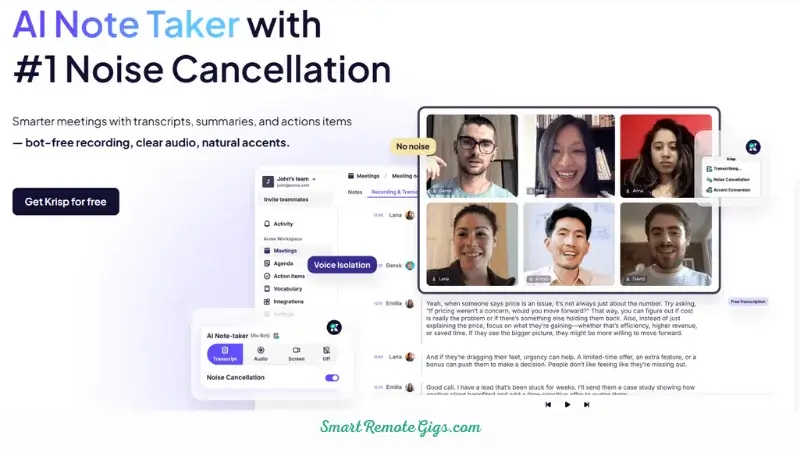
- What it is: An AI-powered audio enhancement tool that eliminates background noise and echo during calls, while also providing meeting insights.
- Best for: Teams working from home offices or co-working spaces where background noise can disrupt communication.
- Key AI Features: Real-time noise cancellation, voice clarity enhancement, and meeting participation analytics.
Pros
Cons
Slack AI
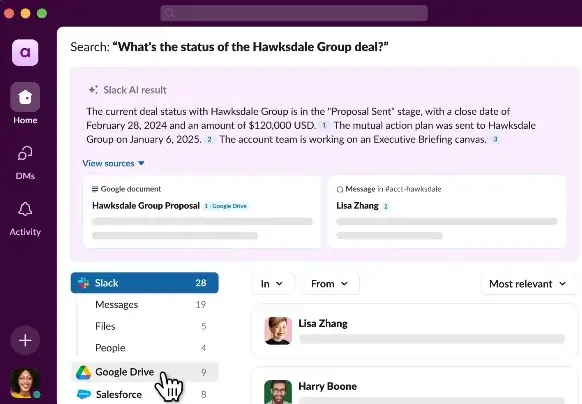
- What it is: AI integrated directly into your Slack workspace to help teams navigate information overload without leaving their primary communication platform.
- Best for:T
- Key AI Features: AI-generated thread summaries, channel recaps to catch up quickly, and intelligent search that understands context.
Pros
Cons
The Best AI Tools for Project Management & Workflow Automation
These AI productivity tools bring order to the chaos of managing multiple projects by automating repetitive tasks, intelligently prioritizing work, and providing predictive insights to stay ahead of bottlenecks.
Motion
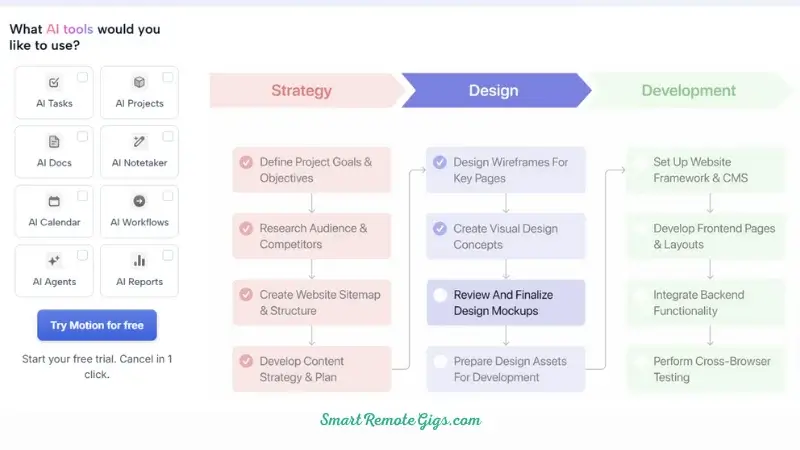
- What it is: An AI-powered calendar and task manager that automatically builds personalized daily schedules and coordinates team availability.
- Best for: Individuals and teams struggling with time management, task prioritization, and balancing planned work with interruptions.
- Key AI Features: Intelligent task scheduling, dynamic re-planning when conflicts arise, and automatic focus time protection.
| Scheduling Challenge | Motion’s AI Solution | Result |
| Overcommitted calendar | Intelligent workload analysis | Realistic scheduling |
| Constant interruptions | Protected focus time blocks | Deep work preservation |
| Priority confusion | AI-driven task ranking | Clear daily focus |
Pros
Cons
Asana Intelligence
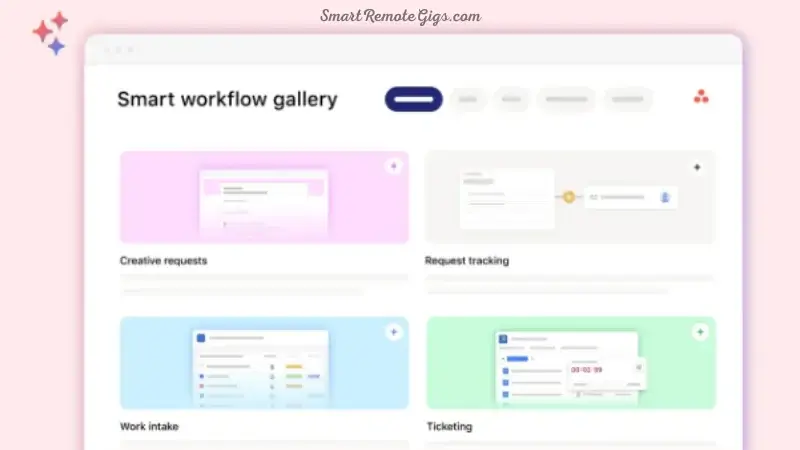
- What it is: AI capabilities brought directly into the Asana platform, enhancing existing workflows with predictive insights and automated task management.
- Best for: Teams already using Asana who want to add AI capabilities without migrating to a new platform.
- Key AI Features: Project risk prediction, smart task creation based on project templates, and AI recommendations for resource optimization.
Pros
Cons
The Best AI Tools for Content Creation & Knowledge Management
This category addresses content bottlenecks and inconsistent messaging by accelerating content creation and creating searchable knowledge base systems that preserve team expertise.
Jasper.ai

- What it is: An AI writing assistant designed for business content, offering brand-trained AI that can produce content matching your organization’s voice and style.
- Best for: Marketing and content teams who need to produce high-quality written content at scale.
- Key AI Features: Brand Voice training, a library of content templates, and built-in SEO optimization suggestions.
| Content Type | Traditional Time | With Jasper.ai | Quality Impact |
| Blog post (1000 words) | 3-4 hours | 45-60 minutes | Maintained or improved |
| Email campaign | 2-3 hours | 30-45 minutes | More consistent messaging |
| Social media with | 1-2 hours | 15-30 minutes | Better engagement rates |
Pros
Cons
ChatGPT
What it is: A versatile conversational AI, known as the “Swiss-army knife” for digital tasks.
Best for: Teams needing a fast, all-purpose assistant for brainstorming, content creation, and quick code generation.
Key AI Capabilities: Creative content drafting, versatile problem-solving, and rapid code generation.
Pros
Cons
Claude 3
What it is: An advanced conversational AI focused on complex reasoning and in-depth analysis.
Best for: Teams that handle large documents, require nuanced understanding, and tackle complex strategic problems.
Key AI Capabilities: Large-document analysis, complex reasoning, and sophisticated content generation
Pros
Cons
Notion AI
- What it is: AI integrated directly into the popular knowledge base platform, enhancing documentation with AI-powered content creation and organization.
- Best for: Teams already using Notion who want to add AI capabilities to their established information architecture.
- Key AI Features: Automatic summarization of long documents, AI assistance for expanding notes, and information extraction to create structured data.
Pros
Cons
The Next Wave: AI Agents as Digital Teammates
The future of AI for remote workers involves autonomous agents that function as digital teammates. This emerging category represents a shift from AI as a tool to AI as a collaborative partner. Expect to see:
- Autonomous Task Execution: AI agents that can be assigned complex projects and work independently.
- Cross-platform Integration: Agents that operate across your entire tech stack, moving information and coordinating activities without human intervention.
- Predictive Problem-solving: Systems that proactively identify potential issues before they impact project delivery.
Successful implementation will require careful consideration of boundaries, but as these agents mature, they will handle an increasing portion of the administrative overhead that consumes human time and energy.
Conclusion: Your Next Steps to Building a Strategic Stack
Discovering the right tools is the first crucial step, but true transformation comes from strategy. The most successful remote teams don’t just collect AI tools; they build a cohesive technology stack where each component serves a purpose and enhances the others.
But selecting tools is just the beginning. To truly succeed, you need a clear strategy for implementation, measuring ROI, and avoiding common mistakes. To help you take the next step, explore our in-depth guides:
- [Your Next Read] How to Build and Budget for Your AI Collaboration Stack: Learn our layer-by-layer method for creating a cohesive tech stack that addresses your core challenges without breaking the bank.
- [Your Next Read] Measuring the ROI of AI Tools for Your Remote Team: A practical guide to tracking the metrics that matter, from productivity gains to team satisfaction, ensuring your investment delivers real value.
- [Your Next Read] 5 Common Pitfalls When Adopting AI Team Tools (And How to Avoid Them): Learn from the mistakes of others to ensure a smooth and successful AI adoption process for your team.
The AI space moves fast. What new tool has transformed your remote team? Share your pick in the comments below!
Frequently Asked Questions
Q: How much should a small team budget for AI tools monthly?
A: Most effective AI stacks for small teams (5-10 people) range from $50-200 per person per month. Start with free tiers and gradually upgrade based on demonstrated value.
Q: Can AI tools replace project managers for remote teams?
A: No. AI tools excel at automating administrative tasks but cannot replace the human judgment, relationship management, and strategic thinking of effective project managers.
Q: How do I ensure data security when using AI tools?
A: Review each tool’s security certifications and data handling policies. Establish clear guidelines about what information can be shared with AI systems.
Q: What’s the biggest mistake teams make when adopting AI tools?
A: Adopting multiple tools without considering integration, which leads to increased complexity rather than improved productivity. Focus on solving specific problems with tools that work well together.
Q: How long does it typically take to see productivity improvements from AI tools?
A: Most teams see initial time savings within 2-4 weeks, with more significant productivity improvements becoming apparent after 2-3 months as workflows are optimized.
Best AI Tools for Productivity
Fireflies.ai
An AI meeting assistant that automatically joins calls to record, transcribe, and generate smart summaries and action items — perfect for teams that need searchable meeting archives and clear follow-ups.
An AI meeting assistant that automatically joins calls to record, transcribe, and generate smart summaries and action items.
Editor’s Rating:
Visit WebsiteKrisp.ai
An AI audio enhancement tool that removes background noise and echo in real time, improving call clarity and reducing meeting friction for distributed teams.
An AI audio enhancement tool that removes background noise and echo in real time, improving call clarity for distributed teams.
Editor’s Rating:
Visit WebsiteSlack AI
AI integrated directly into Slack that produces thread summaries, channel recaps, and context-aware search — keeping teams aligned without leaving their primary communication hub.
Produces thread summaries, channel recaps, and context-aware search to keep teams aligned within their primary communication hub.
Editor’s Rating:
Visit WebsiteMotion
An AI-driven calendar and task manager that builds realistic daily schedules, reprioritizes dynamically, and protects focus time so teams spend less time planning and more time doing.
Builds realistic daily schedules, reprioritizes dynamically, and protects focus time so teams can spend less time planning.
Editor’s Rating:
Visit WebsiteAsana Intelligence
AI capabilities inside Asana that predict project risk, auto-generate tasks from templates, and recommend resource optimizations to keep complex workflows on track.
Predicts project risk, auto-generates tasks, and recommends resource optimizations to keep complex workflows on track.
Editor’s Rating:
Visit WebsiteJasper.ai
A business-focused AI writing assistant trained to match brand voice and speed up content production — from blog posts to email campaigns and social copy.
A business-focused AI writing assistant trained to match brand voice and speed up content production for marketing.
Editor’s Rating:
Visit WebsiteChatGPT
A versatile conversational AI for ideation, drafting, analysis and code generation — useful as a Swiss-army assistant across content, data, and engineering tasks.
A versatile conversational AI for ideation, drafting, analysis, and code generation; a Swiss-army assistant for any team.
Editor’s Rating:
Visit WebsiteClaude
An advanced conversational AI designed for complex reasoning and creative problem-solving, helping teams draft ideas, summarize knowledge, and automate routine cognitive tasks.
An advanced conversational AI designed for complex reasoning and creative problem-solving to automate cognitive tasks.
Editor’s Rating:
Visit WebsiteNotion AI
AI integrated directly into the popular knowledge base platform, enhancing documentation with AI-powered content creation and organization.
Enhances your established information architecture with automatic summarization, note expansion, and structured data extraction.
